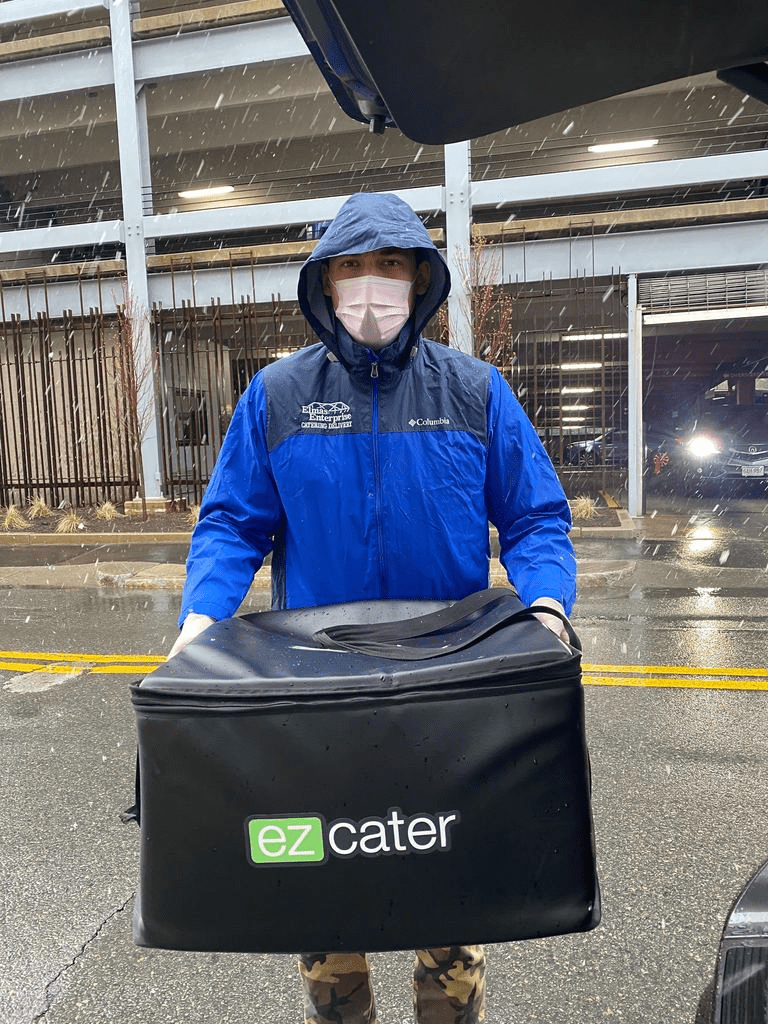While Technomic predicts the negative impact to foodservice from coronavirus will be somewhere between 11% to 27%, there are still opportunities to reach new and existing customers.
As cities and states issue regulations forcing restaurants to close for dine-in, customers are now ordering more food delivery and pick-up. According to Technomic, the number of consumers who said they would increase their food delivery orders nearly doubled from March 6 to March 13.
Here are 8 delivery tips to help you reach more customers and meet their needs.
1. Set up contactless delivery

To help communities and drivers minimize social interaction, set up contactless delivery. Coordinate with your customers ahead of delivery:
- Location. Drop off the order at a previously agreed upon location, and ask customers to take the order once your driver is a safe distance away.
- Time. Ask your driver to call or text the customer with their estimated arrival time.
- Payment and receipts. If your customers need to sign a receipt, have them bring their own pen and ensure your driver is wearing gloves. If you can, take pre-payment digitally and email receipts to avoid handling paper.
2. Expand your delivery zone
Most cities have less traffic due to social distancing, so your drivers may be able to travel beyond your regular delivery zone. Expand your delivery radius gradually to see if there’s increased demand.
3. Designate a dispatch area
If your restaurant is closed for dine-in, transform your front of house (FOH) into a pick-up and dispatch area that respects social distancing. “Put the orders at a convenient place so that they’re organized, they’ve been double-checked, and you can clearly identify which order goes to which customer and which driver is going to take it,” says Ed Keller, Director of Off Premise Business Development at Corner Bakery.
4. Have a checklist for every order going out the door
Remember that delivery is a different channel and offers fewer chances for guest recovery than dine-in. “(You) need to check the order, and then (you) need to check the order again – that’s critical because once it’s out there, (you) can’t run in the back and make (the guest) another side dish or whatever (you) forgot,” says Keller. Keep your checklist simple and logical.
5. Modify your menu
“It’s time to pare down your inventory and your offerings. Eliminate any low-margin menu items, any items that have single-use ingredients, items with short shelf life (such as fresh fish), and any items that don’t travel well.” says James Clark, founder of Clark Culinary Consulting. Clark also recommends moving to individually packaged items since “buffet-style set-ups create conditions for community spread of the virus through touching the same utensils.”
If you have items that can be individually packaged, or a whole new individually packaged menu, please let our menus team know and we’ll add them for you — we’re here to help!
6. Lower your order minimums
Increase your reach by adjusting the number of people your packages typically feed to cater to smaller groups. Rebecca Squire, Catering Sales Manager at Fresh City, recommends creating family packs of your most popular items to help feed families during this time.
7. Deliver a great experience through packaging
With contactless delivery being a priority for many consumers, tamper-resistant solutions are very relevant. If tamper-resistant packaging is too pricey right now, cheaper options like stickers or tape can make all the difference to your customers.
8. Let your customers know you deliver
Don’t assume customers know you’re open for business. Make your online ordering link and phone number prominent on your website, and don’t forget to post your menus. Promote your hours, contactless delivery (if available), and how to order on social media. And don’t be afraid to ask your community to help you spread the word.
As the coronavirus disrupts the foodservice industry, making your delivery service more efficient and safer can set your business apart.
Check out more account optimization tips to expand your customer reach.







